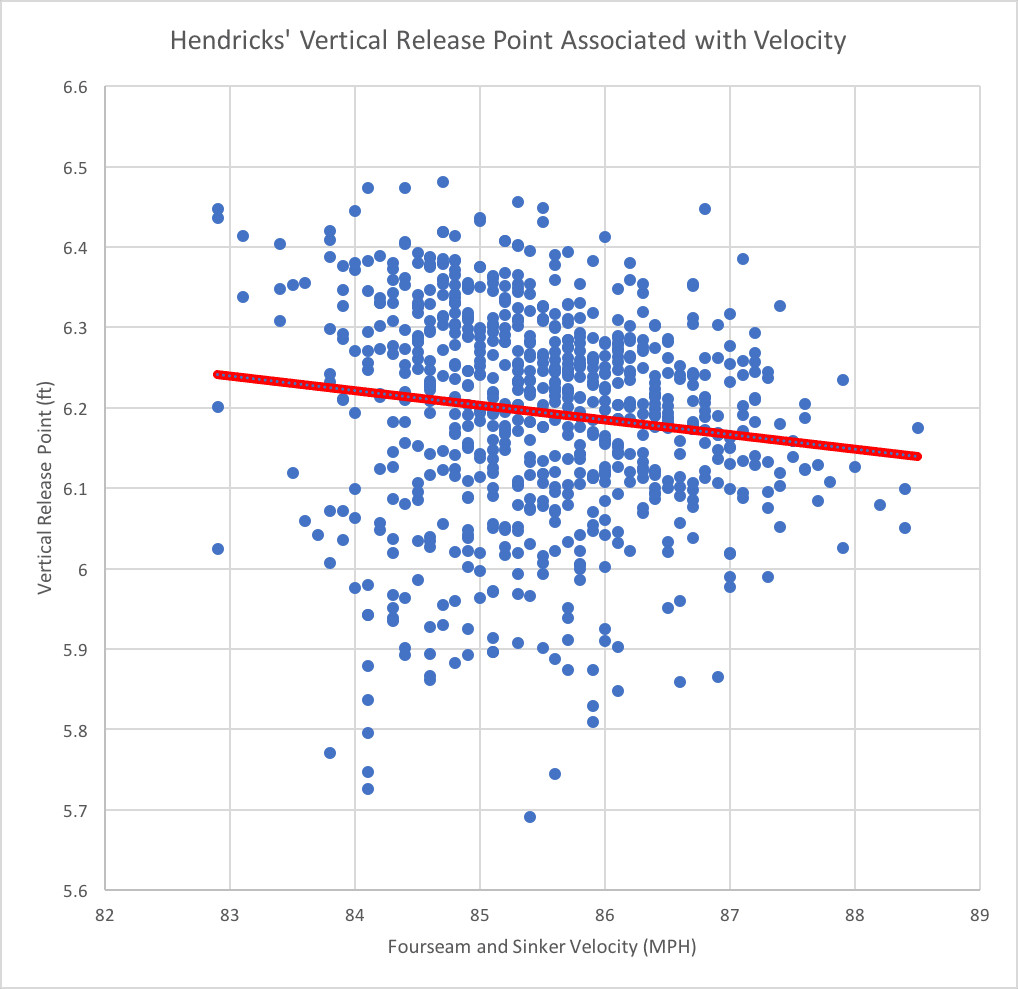
A Two-Part Explanation for Kyle Hendricks’ Decreased Velocity
Kyle Hendricks is throwing over 2 mph slower this year and we all want to know why. Okay, I want to know why, and I’m projecting my anxiety onto the rest of you. But you should want to know what’s up with the decreased velo, which is why I’m going to ‘splain it to you.
The real answer is so multifaceted that we’ll never know the exact reasons. Fatigue, injuries, and mechanics are possibilities. In reality, all three have likely contributed and snowballed to give us the 85 mph pitcher we’re seeing today. Nevertheless, there are two noteworthy observations that are contributing to Hendricks’ lower velocity.
Observation #1
I found a significant correlation between Hendricks’ vertical release point and velocity using the 755 fastballs he’s thrown in 2017. When Hendricks’ release point is higher, he throws slower. Based on my findings, the chances of this correlation being a fluke are less than 0.1 percent (p<.0001).
Granted, the correlation is mild (R = -0.152 for number nerds), and some might argue that this finding is too small to matter. However, so many factors contribute to throwing a baseball that it’s hard not to ignore something as clear as this.
I tried finding some explanation for the higher release point while watching footage of Hendricks from the past couple seasons. Of course, I’m no pitching coach, and if I knew how to throw baseballs that well, I wouldn’t be writing here. Oh well.
I see a small difference from when Hendricks throws close to 90 mph compared to when he throws in the low 80’s, which appears to be an altered release point. The first video on the left is an 89 mph fastball and the pitch on the right is an 83 mph fastball. Notice how you can see Hendricks’ jersey number towards home plate when he throws the slower pitch. He’s more hunched and not nearly as upright.
This is only one example among over 750 fastballs, though, so it could just be random.
Observation #2
Even more significant than the previous note, Hendricks’ vertical release point has been oddly inconsistent. The 2016 Cy Young candidate was almost machine-like in how he rarely deviated from his point of release last season. This year, however, he’s been all over the place, as illustrated by the peaks and valleys in the 2017 data below.
Conclusion
Hendricks throws slower when he comes more over-the-top and when his release point is noticeably less consistent. This combination suggests that he is off mechanically because of some unknown reason. Perhaps it’s fatigue or maybe he’s dealing with discomfort. Then again, it could just be a random occurrence.
Whatever the reason for the two findings above, it’s undeniable that both are to some degree influencing Hendricks’ velocity.





